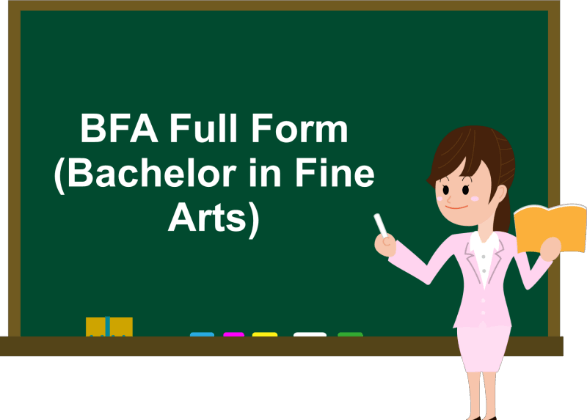A Bachelor of Fine Arts (BFA) is an undergraduate degree program that focuses on the study and practice of visual arts and creative disciplines. It is typically a four-year program, although the duration may vary by country and institution. The BFA degree is designed for students who want to pursue careers in the arts and related fields.
Introduction

Unleashing Artistic Expression
A Bachelor of Fine Arts program is a vibrant and dynamic space where individuals with a passion for artistic expression embark on a voyage of self-discovery. It offers a comprehensive curriculum that encompasses a wide array of artistic disciplines, including painting, sculpture, drawing, graphic design, photography, ceramics, theater, dance, music, and more. Through a combination of theoretical study and hands-on studio practice, BFA students explore the diverse facets of their chosen art forms.
The Journey of Creativity
Central to the BFA experience is the cultivation of creativity. Students are encouraged to think critically, experiment boldly, and push the boundaries of conventional artistic norms. This educational journey is marked by countless hours spent in studios, workshops, and performance spaces, where ideas take shape, skills are honed, and artistry is refined.
Art History and Theory
In addition to practical training, BFA programs also emphasize the importance of art history and theory. Understanding the rich tapestry of art across different time periods and cultures provides context and depth to students’ work. It enables them to engage in meaningful conversations about their art and contribute to the ongoing discourse in the world of art.
Course Details BFA
| Aspect | Details |
|---|---|
| Duration | Typically 3 to 4 years |
| Eligibility | Completion of higher secondary education (10+2) or equivalent; may require a portfolio or entrance exam |
| Specializations | Visual Arts (e.g., painting, sculpture), Performing Arts (e.g., dance, theater), Applied Arts (e.g., graphic design) |
| Curriculum | Mix of theory and practical courses, core courses in art history, drawing, painting, sculpture, design principles, color theory, and specialized courses based on the chosen specialization |
| Practical Training | Studio practice, workshops, internships, real-world projects |
| Assessments | Exams, assessments of artwork and projects, portfolios, practical demonstrations |
| Career Opportunities | Artist, Graphic Designer, Illustrator, Animator, Art Director, Art Teacher, Sculptor, Printmaker, etc. |
Eligibility Createria of BFA
- Educational Qualifications: Candidates should have completed their higher secondary education (10+2) or an equivalent examination from a recognized educational board or institution.
- Minimum Percentage: Many institutions have a minimum percentage requirement in the qualifying examination, often ranging from 50% to 60% in the aggregate.
- Subject Requirements: While specific subject requirements can vary, candidates with a background in arts, particularly with subjects like Fine Arts, Visual Arts, Painting, Drawing, or related subjects, may be given preference.
- Portfolio Submission: Some institutions may require candidates to submit a portfolio showcasing their artistic work. This is especially common for programs that emphasize practical skills and artistic abilities.
- Entrance Exam: Some institutions and countries conduct an entrance examination to assess the candidate’s artistic aptitude, creativity, and skills. The exam may include components such as drawing, design and color theory.
Admission Process of BFA
| Step | Process | Details |
|---|---|---|
| 1. | Research and Shortlisting | Research institutions offering BFA programs, considering factors like reputation, faculty, facilities, and course structure. Shortlist preferred institutions. |
| 2. | Review Eligibility Criteria | Carefully review the eligibility criteria for the BFA program at each institution to ensure qualifications and requirements are met. |
| 3. | Application Form Submission | Obtain the application form from the institution, either from their admissions office or official website. Complete the application form with accurate information and attach required documents. |
| 4. | Entrance Exam (if applicable) | Some institutions may conduct an entrance exam to assess artistic skills, creativity, and aptitude for fine arts. Prepare for the exam based on provided guidelines. |
| 5. | Portfolio Submission | Prepare a portfolio showcasing artwork, creativity, and skills in fine arts. Follow the specific portfolio submission guidelines provided by the institution. |
| 6. | Entrance Exam Results | Await the results of the entrance exam, if applicable, as they may be a factor in the admission decision. |
Top Colleges for BFA
| Rank | College Name | Location |
|---|---|---|
| 1 | Faculty of Fine Arts, MS University of Baroda | Vadodara, Gujarat |
| 2 | Sir J.J. Institute of Applied Art | Mumbai, Maharashtra |
| 3 | Delhi College of Art | New Delhi, Delhi |
| 4 | Kala Bhavana, Visva-Bharati University | Santiniketan, West Bengal |
| 5 | Government College of Fine Arts, Chennai | Chennai, Tamil Nadu |
| 6 | Jamia Millia Islamia, Faculty of Fine Arts | New Delhi, Delhi |
| 7 | Government College of Art & Craft | Kolkata, West Bengal |
| 8 | Banaras Hindu University (BHU), Faculty of Visual Arts | Varanasi, Uttar Pradesh |
| 9 | Jawaharlal Nehru Architecture and Fine Arts University (JNAFAU) | Hyderabad, Telangana |
| 10 | Government College of Art & Craft | Guwahati, Assam |
Faculty and Facilities
Faculty:
- Professors and Lecturers:
- Experienced and knowledgeable faculty members with expertise in various art forms and specializations.
- They guide students in honing their skills, understanding art theory, and developing a strong foundation in fine arts.
2. Visiting Artists and Industry Experts:
- Many BFA programs invite visiting artists, renowned professionals, and industry experts for lectures, workshops, and critiques.
- These interactions offer exposure to different perspectives, contemporary trends, and real-world insights.
3. Art Historians and Critics:
- Faculty members specialized in art history and critique provide valuable knowledge about the history of art, art movements, and critical analysis of artworks.
Facilities:
- Art Studios:
- Dedicated art studios equipped with ample space, natural lighting, and necessary tools for students to work on their art projects. These are often tailored to specific art mediums, such as painting, sculpture, ceramics, etc.
2. Workshops and Labs:
- Specialized workshops and laboratories for experimentation and hands-on learning. For example, a printmaking lab, sculpture workshop, or digital media lab.
3. Gallery Spaces:
- Exhibition spaces where students can showcase their artwork to the public and receive feedback. This fosters creativity and helps students understand the professional exhibition process.
Conclusion
A Bachelor of Fine Arts (BFA) is a transformative educational journey that equips aspiring artists with the skills, knowledge, and creativity needed to thrive in the diverse world of visual and performing arts. Throughout this exploration, we’ve delved into the essential components that define the BFA experience.
FAQs
A Bachelor of Fine Arts (BFA) is an undergraduate degree that focuses on artistic disciplines, including visual arts, performing arts, and creative arts. It aims to develop technical skills, creativity, and a deeper understanding of various art forms.
BFA programs offer a range of specializations, including but not limited to painting, sculpture, printmaking, ceramics, graphic design, illustration, photography, dance, theater, and music.
A BFA program typically lasts for three to four years, but the duration can vary based on the institution and country.
Eligibility criteria often include completing higher secondary education (10+2) or an equivalent qualification. Some institutions may require a portfolio or conduct an entrance exam to assess artistic aptitude.
Read Also
Related posts:
- AMC Full Form: Benefits, Components, Needs, Advantage
- ORS Full Form: Dehydration, Myths, Flavors, Varieties & Facts
- PCC Full Form: Importance, Types, Application Process
- PAN Full Form: Legal Provisions, Regulations,
- BRB Full Form: Productive, Routine, Distractions
- MCD Full From: Introduction, Responsibility, Challenges
- CT Scan Full Form: Scans, price, Advantages
- USA Full Form: History, Economics,Technology, culture




















